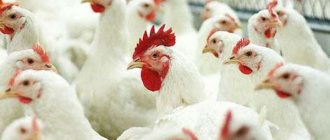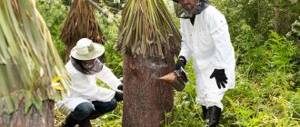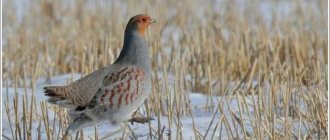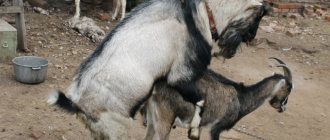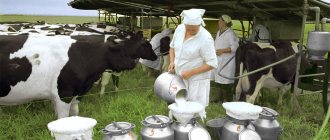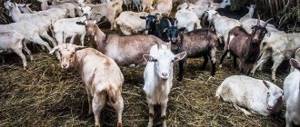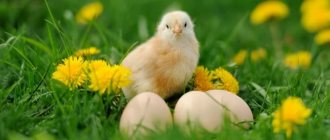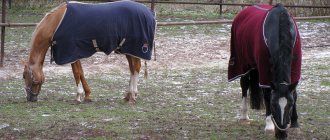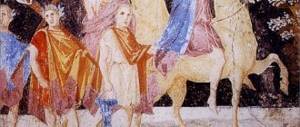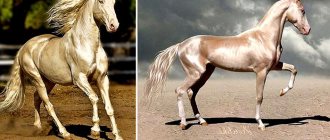The state of Russian horse breeding
In pre-revolutionary times, Russia was one of the world leaders in the total number of horses. For example, it is known that by the beginning of the First World War, there were about 40 million heads of these animals in our country, which amounted to approximately a third of the world's population. In tsarist times, horse breeding was one of the most important branches of animal husbandry, since horses were used in the army, in transport, and as draft animals in agriculture and industry, as well as as a source of meat, milk and hides.
The situation began to change radically in the 1940s. The decline in the role of horse breeding and horses was caused by several reasons:
- Direct losses during World War II. During the fighting, as well as from starvation and other causes, at least 10 million animals died.
- Reducing the need for horses in the army. Although cavalry was actively used even during World War II, its former importance declined sharply. In the post-war years, the development of horse breeding was influenced by the disbandment of cavalry as a branch of the military and the replacement of draft horses with motorized tractors.
- Technical progress. Widespread mechanization of agriculture, transport and industry made horses unnecessary. They were replaced by tractors and cars.
- Focus on other farm animals and elimination of herd horse breeding. If in pre-revolutionary times horse meat could often be seen on the table of Russians, then with the advent of Soviet power and the introduction of a planned economy, cows and pigs became the main source of meat for sale, since they are more productive in this regard.
The result of all the changes that occurred in the 1930-50s was a sharp reduction in the number of horses in the USSR - to 15 million heads. But the process did not stop there; in subsequent decades, the number of horses continued to decline. Horse breeding and horse breeding gradually declined, and by the end of 2015, on the territory of the Russian Federation, enterprises of all forms of ownership (including household plots) numbered only 1 million 374 thousand horses. However, even this number of animals was enough for the Russian Federation to be among the top ten world leaders in terms of horse population.
Today, horses in Russia are bred mainly in those regions where peoples live who previously led a nomadic lifestyle, for whom horse breeding and sheep breeding have remained the main areas of animal husbandry. We are talking about the republics of Altai, Bashkiria, Buryatia, Kalmykia, Tuva, Altai Territory, as well as certain regions of the Volga region, the Urals and Western Siberia. Here horses are bred mainly for meat and milk.
Horse breeding – factors of placement in Russia
The location of a particular direction depends on many factors, the main of which are: the presence of demand for the products received; availability of food supply; suitable climatic conditions; cultural and national characteristics of the region’s population; historical background and so on.
Based on these factors, we will consider the territorial division of horse breeding enterprises in our country.
More on the topic: How do horses mate?
Meat horse breeding
Horse meat and meat products from it today are practically not in demand among the Slavic population of Russia, but they are very popular among many other nationalities. This is where the territorial imbalance in the spread of commercial horse breeding in our country stems.
At the same time, neither natural-climatic nor economic factors particularly influence horse breeding in Russia. Horses can be bred just as well in areas where cattle are currently dominant, since both horses and cows generally feed on the same grass feed and have the same husbandry requirements. In turn, the cost of producing horse meat is even lower than beef. According to various sources, the cost of producing 1 kg of horse meat is 2-4 times lower than that of producing cattle meat.
Thus, the only significant reason for the small number of livestock in the Russian Federation (1.3 million horses versus 19 million cattle) is associated exclusively with the characteristics of the country’s food market. Simply put, meat breeds are not in demand in horse breeding, since the vast majority of Russians do not eat horse meat.
However, the last statement can be called controversial, since it is only true for fresh meat. If we talk about sausages, then the situation is somewhat different. Horse meat is often used in meat mixtures along with other types of meat used to make sausages. It’s just that ordinary consumers do not pay attention to this fact. But even here, beef horse breeding has certain problems. Firstly, meat processing plants are not very keen to advertise and focus on the composition of their products. Secondly, the sausage market is only a part of the overall meat market, and access to it is primarily provided by large livestock complexes capable of supplying large quantities of meat.
Dairy horse breeding
As with horse meat, there is significant demand for mare's milk only in some non-Slavic regions of the Russian Federation. In large cities of the European part of the country (the main consumers of agricultural products), this product is practically not in demand, and therefore dairy breeds of horses in Russian horse breeding are concentrated outside the European part of the country.
Unlike cow's milk, mare's milk is rarely drunk in its natural form. Basically, it is processed into kumys. It has not only high nutritional value, but also certain medicinal properties. Natural kumiss is recommended even in the treatment of some serious diseases, in particular tuberculosis, diseases of the gastrointestinal tract and bones. By the way, outside the national autonomies, where kumis is a traditional product, the main demand for this product is formed by sanatorium and treatment institutions with an anti-tuberculosis profile.
Thus, dairy horse breeding has an even narrower consumer base than meat horse breeding.
How can you make a profit?
If horse breeding is carried out, then the sale of animals will be the main source of profit. The cost of thoroughbred horses starts from 100,000 rubles. There is no top bar. The price is directly affected by:
- horse age;
- pedigree;
- availability of documents;
- the presence of victories and the level of competitions in which the horse participated;
- health status;
- preparation of the animal.
In parallel with selling horses, you can also engage in related types of business. At the stud farm, you can organize a horse school. The cost of one lesson is 500 rubles. per academic hour. Horses can also be rented out for photo sessions. For 1 hour of work they usually charge at least 1000 rubles.
If the stable is large, then stalls can be rented out. For the monthly maintenance of a horse of a private owner, you can get about 10,000 rubles. The price may vary depending on the location of the complex and its level. The stud farm can provide services for the arrival of animals and their further training. Prices here are individual. Much depends on the goals set by the owner of the animal.
Non-commercial and breeding horse breeding
When draft horses were rapidly replaced by cars and tractors in the first half to mid-twentieth century, the importance of sport horse breeding grew throughout the world. Thoroughbred horses began to be bred primarily for participation in various sports competitions.
Russian horse breeding in this regard lagged significantly behind the rest of the world. First, for ideological and then for economic reasons, many of the few breeding stud farms that remained from pre-revolutionary times were lost. Only some regions were able to maintain horse breeding farms. Only with the formation of a layer of very rich people in the country who could afford such a hobby as their own racehorse, the situation in horse breeding began to change for the better.
But horses can be used not only for racing. In Russia, such promising areas as equestrian tourism and horse hunting are developing. And although so far these industries do not generate a very large demand for horses, in the future we can only expect an increase in the need for horses for these purposes.
Finally, there is such a thing as mounted police. This area of horse breeding can hardly be of interest due to its small share in the total population, but it cannot be ignored. Mounted police units are responsible for maintaining order in city parks and other public places. The largest regiment of mounted police operates in Moscow (about 240 horses). Other large cities also have similar units, but they are even smaller in number.
About the fate of horse breeds in the world - assumptions and reality
Kalashnikov V.V. — Academician of the Russian Academy of Agricultural Sciences, professor, director of the All-Russian Research Institute of Horse Breeding
Rozhdestvenskaya G.A. - Professor, Doctor of Agriculture sciences
Milko O.S. - Doctor of Agriculture sciences
Kibort M.I. - Candidate of Agricultural Sciences sciences
Ryabova T.N. - Candidate of Agricultural Sciences sciences
Kalinkina G.V. - Candidate of Agricultural Sciences sciences
Dorofeeva N.V. - Candidate of Agricultural Sciences sciences
On the pages of the media devoted to horse breeding, articles have appeared calling for a “dealing” with the domestic horse breeding industry, which argue that a number of domestic breeds are an unnecessary luxury, the rest, primarily horse breeds, can be merged into a single one, etc.
In this regard, an impartial analysis of what happened in the pedigree horse breeding of the world in
the 20th century is necessary.
In the middle of the 20th century, the scientific and technological revolution in agriculture and industry changed the fate of horse breeds in civilized countries.
Even earlier, the armies of all civilized countries abandoned cavalry.
Thus, the horse was excluded from most areas of human economic activity, which led to a sharp reduction in the number of horses in the middle of the 20th century in Europe and North America. A sufficiently large number of horses has survived only in underdeveloped countries - China, Mongolia and in countries with a large number of beef cattle kept on pasture (Argentina, Australia, some US states). However, in most industrialized countries, due to respect for their history and traditions, local breeds have been preserved. So in the 1960s. In Great Britain, ten breeds of local ponies and six draft breeds were preserved, while purebred riding and Arabian breeds were widespread in the country. Ten breeds of various types, mainly sporting ones, were bred in Germany; in France, in addition to the French trotter, thoroughbred riding and Arabian breeds, seven more breeds were bred, including four draft breeds. Despite unfavorable market conditions, local horse breeds were preserved in other European countries.
Already in the 70s of the last century, a renaissance of horse breeding began, associated with its new role in the life of mankind.
The horse in agriculture began to perform a very limited range of work, in the specific conditions of this industry (mountainous lands, vegetable growing, etc.). In this regard, the number of heavy draft breeds sharply decreased, and breeds of universal use were quickly “converted” into sports ones.
During the same period (1970s-1980s), due to the growing welfare of the population of economically developed countries in Europe and America, along with the development of hippodrome (horses, racing) and classical types of equestrian sports, numerous types of equestrian sports appeared, associated with recreation for people - horse tourism, races, national holidays with the participation of horses, etc. New types of equestrian sports are also appearing, such as driving (harness racing) and racing. amateur horse breeding emerged and became increasingly widespread.
, associated both with the new uses of the horse listed above, and with the fact that often the horse becomes just a pet, a friend for walks and an object of love and pride.
A special place in these new uses of the horse is occupied by the interaction of children with horses - children's equestrian sports.
It is not for nothing that by the beginning of the 1980s, Shetland ponies occupied the first place in the world among horse breeds in terms of numbers.
With the departure of the horse from the army, transport, industry and agriculture, many experts, especially in our country, predicted that the horse’s sphere of use would remain the hippodrome (racing, racing) and classical sports, and breeds of universal use would disappear completely. Heavy trucks “will be used for meat”, i.e. in small quantities will be used to create and improve those breeds that are bred for meat in those regions where the population eats horse meat.
However, these predictions were completely refuted by the entire course of development of human society. Local breeds, which, as it seemed in the first half of the 20th century, due to complete lack of competitiveness, were supposed to disappear, not only did not disappear, but received a new incentive to preserve and spread.
Such purely local breeds as the Fjord pony, the Haflinger, and a number of local English ponies were in demand and spread in a number of European countries.
The fate of local horse breeds in the Scandinavian countries - Norway, Sweden, Finland - is interesting and instructive. In these countries, local draft horses (cold-blooded in German terminology): Norwegian, North Swedish and Finnish have been used in agriculture and forestry since ancient times. With a sharp decrease in the need for horses, these breeds were used as prize races in the very popular races in these countries. At the same time, local horses were protected by law.
For example, in Finland, any hippodrome that tested trotters was obliged to allocate a certain minimum prize money for trotters of the local breed. In 2002, at racecourses in Finland, prizes worth 10.6 million euros were played for warm-blooded (American trotters), and 5.6 million euros for local cold-blooded trotters. The number of queens of both breeds is 2.3 thousand and 2 thousand, respectively.
In Norway, the number of local queens is 1.6 thousand, American ones - 1.3 thousand, prizes for local trotters amounted to 10.2 million euros, for American ones - 12.7 million euros.
In Sweden, the number of North Swedish queens relative to American ones is minimal - 862 heads and 6.2 thousand, i.e. North Swedish mares make up approximately 1/8 of the number of “warmblood” American mares, the amounts up for grabs for North Swedish trotters are 5.9 million euros, for American ones - 63.8.
The existence of a large number of diverse horse breeds in Europe and the USA is ensured in various ways. In rich countries with a market economy and a well-developed civil society that ensures free initiative of citizens, the most common type of organization involved in the preservation and dissemination of local breeds are societies, unions, and associations that arise both as a result of the demand for a given breed from the horse market and based on healthy local patriotism and respect for traditions. These organizations themselves ensure the economic breeding of this or that breed.
It must be taken into account that horse breeding, both in the distant past and in our time, is rarely a cheap and profitable enterprise.
Therefore, obviously, in the case of preserving and breeding unique breeds that are objects of national and world culture and history, the state intervenes in this process with the help of laws and direct subsidies. This is how the Kladrub breed is preserved in the Czech Republic, the Andalusian breed (pura raza espanola) in Spain, and the local Finnish breed in Finland. The patronage of the Dutch royal family greatly brought public attention to the preservation of the ancient Friesian breed.
A large number of horse breeds of a similar type - riding (in addition to thoroughbred and Arabian), trotting, light-drawn, heavy-drawn, ponies of various classes, leads to questions about their possible integration, unification into one breed according to the direction of use.
However, only French horse breeders took the path of integration, uniting all half-bred riding breeds bred in the country into one, regardless of origin (Sell fransaise).
At the same time, their colleagues from the French Trotting Association are taking all measures to prevent the French Trotter from merging with the American Trotter.
Thus, modern horse breeding of the civilized world is characterized not only by the wide distribution of such prize breeds as the thoroughbred horse, standardbred, the favorite of the wealthy public, the purebred Arab, and the German half-bred breeds most valued in classical equestrian sports, but also increased attention to local breeds that have historically developed in different countries or created in
the 20th century to satisfy certain needs of society, mainly for recreation.
The number of such breeds bred in different countries has not only decreased, but also increased. Many of them went from being purely local, seemingly doomed to extinction, to becoming quite widespread.
Russia, a vast territory, even in the past, when the army, transport, agriculture and, to a large extent, industry could not exist without horses, did not have a large number of horse breeds.
This was due, first of all, to the harsh climate, the impossibility of farming in many regions of the country, and most importantly, to the very low agricultural and livestock breeding standards. The types of local horses that developed in a number of regions could not be considered breeds, because formed mainly under the influence of natural selection, without purposeful artificial selection, without breeding records, tests, etc. The main feature ensuring the existence of such populations was adaptation to local conditions.
In the 1930s-40s, specialists from the Institute of Horse Breeding, when conducting a survey of the horse resources of the Soviet Union, clearly distinguished between the concepts of breed and local horse. It was established that there were representatives of ten cultural factory breeds in the country, the ancestors of six of which were bred from Western Europe (Arabian, thoroughbred horse breed, Ardennes, Brabançons, Clydesdales, Percherons) and three domestic ones, known throughout the world - Don, Oryol, Akhal-Teke, ten primitive breeds - Lokai, Karachay, Altai, Kazakh, Kyrgyz, Adaevsk, Buryat-Mongolian, Priobskaya, Vyatka, Polesie.
Four breeds were recognized by Soviet specialists as transitional in the 1930s - the Central Asian Iodmuda, Karabair, Kabardian and Voronezh working-harness (Bityug).
In the 1930-50s, due to the great need for horses for agriculture and the army, there was an intensive process of expanded reproduction of the most valuable factory breeds and their improvement of the local horse stock. As a result of this process, by the 1950s, a number of domestic breeds were created: the Russian heavy draft (based on the Arden), the Soviet draft (from absorption crossing with Brabançons), the Vladimir draft (from crossing with Clydesdales and Shires); Russian trotter (American-Oryol cross), Budyonnovskaya riding (from crossing Don and Black Sea mares with purebred stallions), Terek breed was created on the basis of the old Streltsy horses that existed in Russia. Among the so-called “transitional” breeds, Kabardian and Karabair became factory breeds, thanks to the increased role of artificial selection and crossing.
In connection with the accession to the USSR in 1939-40. the Baltic countries-Estonia, Latvia and Lithuania, the number of factory breeds bred in the USSR included the Tori, Latvian and Lithuanian draft breeds.
In the same years, among primitive breeds, based on crossing them with factory breeds, work began to create new breeds, which ended in the second half of the 20th century with the creation of the Tajik (based on the Lokai), Novo-Altai (from the Altai), Novo-Kirghiz (from the Kyrgyz), Belarusian harness (based on crosses). A number of new breeds were created on the basis of the local Kazakh horse - including the Kustanai and Kushum horses. With the new “revision” of the horse stock of the USSR, the results of which were published in 1952 in Volume I of the “Book of the Horse,” both the number of factory breeds and newly examined local primitive breeds, especially in the Siberian region, increased significantly.
During this period, there were 19 factory breeds, 15 primitive local breeds, and 4 transitional breeds.
By the 1970s, after the modernization and mechanization of agriculture in our country and the associated sharp reduction in commercial and, accordingly, breeding horses, the same 19 factory breeds remained in the country.
In the period of the 50-70s, as in earlier years, in order to obtain a larger agricultural horse, intensive improvement of local breeds with cultivated and factory breeds was carried out. As a result, many of the local breeds lost their originality, breed characteristics, and specific gene pool and either disappeared completely or found themselves in a state of extinction. These were Vyatka, Mezen, Estonian klepper, Pechora, Priobskaya, Hutsul, Transbaikal. The Tavdinskaya, Narymskaya, Minusinskaya practically disappeared, and from the so-called “transitional” ones, which were considered in the future as factory ones, the Voronezh harness, Kuznetsk and Chumyshskaya disappeared.
At the end of the 1980s, on the initiative and methodology of FAO, the condition of farm animal breeds was examined in all countries of the world, including in the USSR. The method of describing breeds required specific data on numbers, selected traits, fertility, breeding records, and genealogical structure. 22 breeds met these requirements, including three conditionally - Lokai, Kushum and Kabardian. Of these 22 breeds, 12 were riding and riding-harness breeds (Ahal-Teke, Arabian, Terek, thoroughbred, Trakehner, Ukrainian riding, Budennovskaya, Don, Kabardian), two light-draft - Oryol and Russian trotting, seven heavy-draft (Latvian, Tori, Belarusian sled, Russian, Soviet and Vladimir heavy, Lithuanian heavy) and one - officially productive, i.e. bred for horse meat - Kushumskaya.
During this period in the Baltics, with the development of equestrian sports, mares of the Latvian and Tori breeds began to be mated with Trakehner and Hanoverian stallions in order to obtain a sports horse. Despite the demand for the Tory breed in many republics of the Soviet Union, it was the first to experience a sales crisis in Estonia in the conditions of more developed agriculture. The list of horse breeds already given in the USSR on the eve of perestroika speaks about the direction of horse breeding and its specifics.
From 1989 to the present, horse breeding has developed freely, without any pressure or encouragement from the state, according to the laws of the developing market.
As a result of a complex of objective factors that have been in effect over the past 15 years, the following situation has developed in Russian horse breeding.
In first place in terms of the number of registered broodmares and sires is the Russian trotting breed - 2050 dams and 85 stud stallions. This number also includes purebred standardbred trotters, which are registered in the same state stud books as Russians. Thoroughbred horses are in second place with 1,185 dams and 108 sires. In third place is Trakehner with 940 queens and 140 stallions. On the fourth - Budennovskaya - respectively 910 queens and 114 stallions. In fifth place is the Orlov Trotter - 798 queens and 91 sires. In sixth place is the Russian draft horse with 672 mares and 174 stallions, in seventh place is the Don horse with 615 mares and 43 sires. These seven breeds are represented by more than 500 queens. Three more factory breeds - Akhal-Teke, Arabian and Hanoverian - have a population of 473 to 200 queens. It should be borne in mind that their population in Russia is only part of the international gene pool, as well as Percherons (164 dams, 48 stallions) and Shetland ponies (77 and 16). Created in the 20th century in Russia, the Terek riding breed and the Soviet and Vladimir heavy draft breeds have, respectively, 132, 139 and 113 registered mares and 25, 20 and 20 sires.
A more significant number of mares and stallions are made up of local productive breeds: Bashkir (about 3,000 queens) and Novo-Altaisk (1,790 queens, 138 sires) and Yakut (several thousand queens, no regular breeding) bred in extreme taiga conditions.
Thus, Russia has seventeen breeds bred with pedigree registration, i.e. actually existing.
This is an objectively established minimum that should be supported and preserved by all possible means.
Horse breeding as a business
Since the horse breeding industries are represented by very different areas (commodity and sports), breeding meat breeds of horses will be very different from breeding pedigree horses.
If we talk about horse breeding farms specializing in the production of horse meat and mare's milk, then such a business is created approximately according to the same scheme as a regular cattle farm, only with its own specifics. In view of this, there is no point in dwelling in detail on commercial horse breeding. You can get a general idea about it by reading the corresponding article on cow breeding published on our website.
Breeding of racing horses should be considered in more detail. This type of horse breeding is best developed in Moscow and the Moscow region. This is a rather complex and expensive business, which is most often started not so much for the sake of earning money, but as a hobby. Experienced horse breeders assure that sport horse breeding should not be considered as the main source of income, since it is a very complex and high-risk business.
Unless you are a big fan of horses and have in-depth knowledge of how to breed and care for horses, then we can immediately say that you definitely should not start a small business in this area. Private horse breeding is a business for passionate millionaires who are interested in horses not as a source of income, but as entertainment.
The costs of organizing horse breeding, even in the form of a small stud farm, will be very high. Taking into account the fact that a good purebred horse costs as much as a business-class car, in order to acquire starting stock you will have to spend more than one million rubles. And this is not to mention the construction of outbuildings, the purchase of land, equipment and other costs.
It is quite difficult to talk about the profitability and profit volumes of a stud farm. Every month you will have to spend from several hundred to several thousand dollars to maintain one horse. Maintenance means not only feeding, but also training, veterinary care, participation in racing, etc.
At the same time, the sales market for such horses in Russia is extremely narrow. The country's horse breeding essentially lives off individual purchase and sale transactions, which most often take place in the form of auctions. Thus, for your business to develop normally, you will simply need access to the international racehorse market. This is the only way to count on at least some success.
By the way, there are several domestic horse breeding forums on the Internet, from which you can learn a lot of details about the realities of the domestic racehorse market.
Horse breeding products
We recommend reading our other articles
- Holstein cow breed
- The best potato varieties with descriptions and photos
- Gooseberry variety Ural emerald
- Milking machine for goats
The horse breeding industry supplies the world market not only with horses themselves for racing, as purebred animals for keeping and breeding, but also with products that have industrial or pharmaceutical significance.
- Horse meat is considered dietary. It's very tasty. The most tender and expensive ones are obtained from foals up to 10 months old. Horse meat is sold simply as meat, and is also used for making sausages and canned food. It has a lot of protein, little fat, and horse meat is hypoallergenic and well digestible. The meat sector of horse breeding is well developed in Russia, Hungary, Kazakhstan, and Mongolia.
- Horse milk and fermented milk product (kumys)what is made from it has a strong healing effect. The milk of these animals is tasty and contains a lot of nutrients. Kumis is often used in sanatoriums where people with diseases of the respiratory and digestive systems are treated.
Serum from horse blood is highly valued in pharmaceuticals.
- Horsehair is used in manufacturing and light industry. Threads, yarn, etc. are made from it.
- Horse hide is popular in manufacturing and light industry. Clothes, shoes, bags, etc. are made from it.
- Blood serum . This is a unique substance that is highly valued in pharmaceuticals and biotechnology. It is used to create vaccines, hormonal and enzymatic preparations. In particular, the serum of thoroughbred mares is of great importance for pharmaceuticals.
Products obtained from horse breeding are of high importance for various areas of human life. To the above products that are obtained from horses, it is also worth adding horse manure, which is superior in quality to cow and even chicken manure, but is also much more expensive. It is often used in agriculture.

